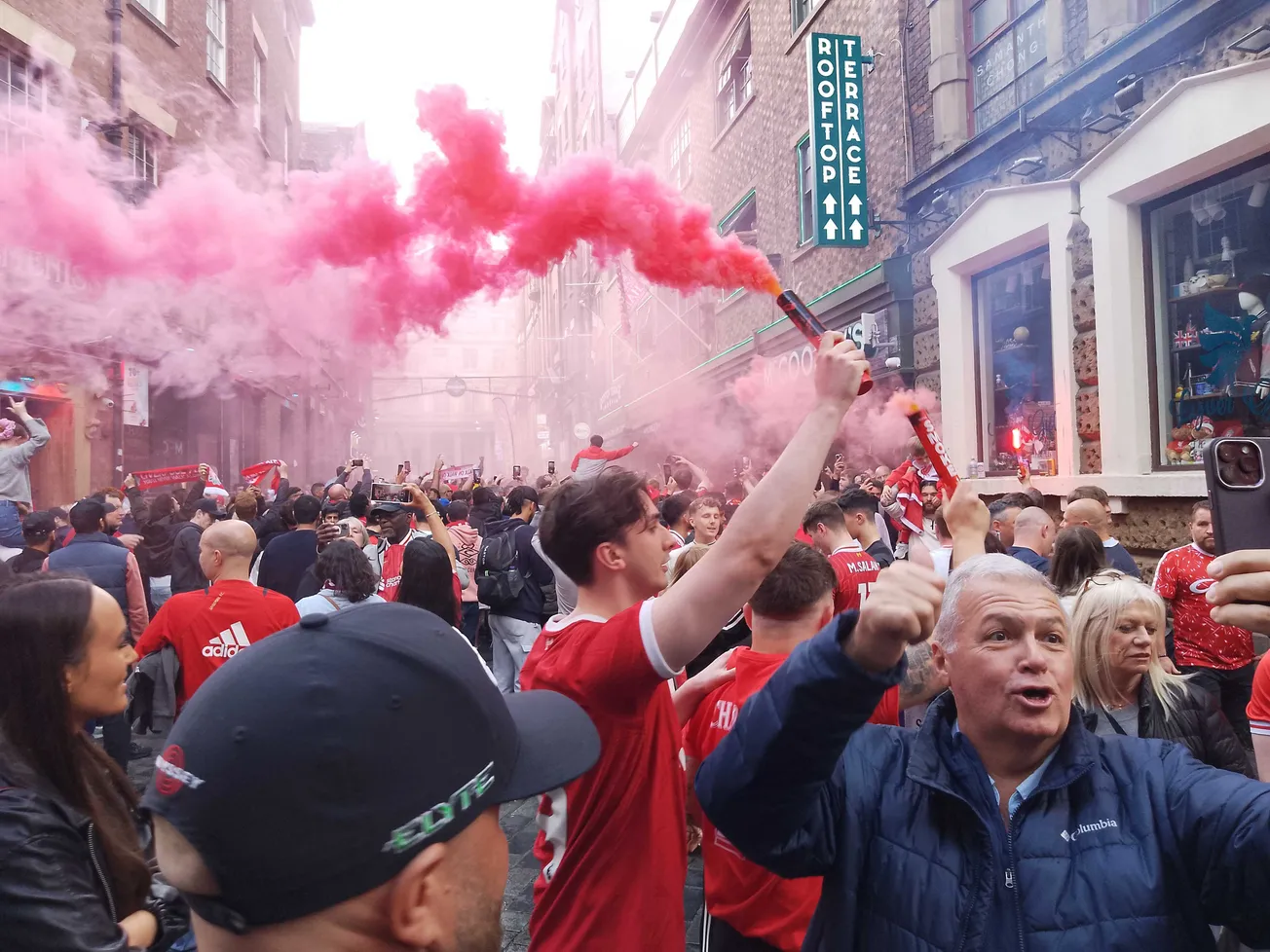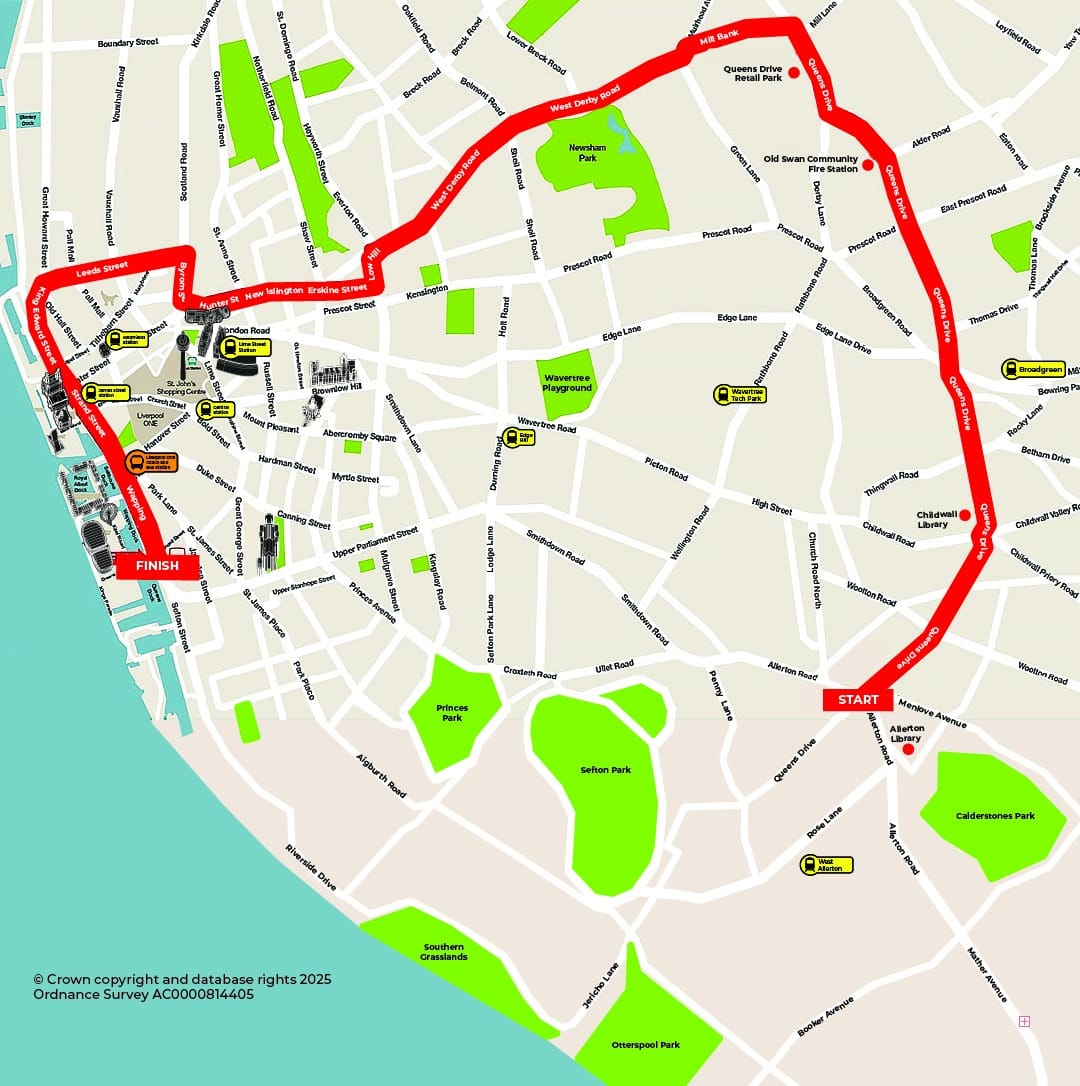How Liverpool’s day of triumph became a night of fear

50 people are being treated in hospital after a car ploughed into fans on Monday. But could the attack have been prevented?
Today’s edition of The Post is not paywalled as we believe this important reporting on a tragedy should be accessible to all readers. However, if you appreciate our work, please consider signing up as a paying member to support us if you haven’t already.
It should have been a perfect day.
Ecstatic over a 20th league title, finally confirming their club as England’s most successful, Liverpool fans flooded the city’s heart for hours. The victory parade on Monday brought people from all over the country: platforms at Birmingham New Street, Preston, Crewe and Leeds all heaved with pilgrims in red jerseys. Their destination: Liverpool, the country’s new footballing capital. Rainy grey streets turned into arteries of vibrant red.

The next morning, at least two of those streets are cordoned off with blue and white police tape. Just after 6pm on the day of the parade, a black Ford Galaxy sped into the crowd on Water Street, colliding with unsuspecting fans. Dale Street, where the incident began, is still only half open with a strong police presence.
“I can’t believe it, it still doesn’t seem real,” says Allison, staring at the mobile police station barricading where Dale Street meets North John Street. Allison did not witness the incident but was on the nearby Strand when it happened: she describes a wave of panic and confusion emanating through the crowd. As she speaks, her hand clutches the Liver Bird logo on her LFC scarf.
“I’m devastated,” says another fan, who has asked not to be named, but was just around the corner during the collision. He felt duty-bound to tell people what had happened, but without a phone signal had to rely on the Wi-Fi of nearby bars. Others encountered the same difficulties. “We only managed to get through to family and friends by about midnight,” another fan says. “The signal was just so bad. I had loads of missed calls.”
At the time of writing, the driver’s motivations are still opaque. Police have not given a name, but a 53-year-old man from West Derby has been arrested on suspicion of driving while unfit through drugs and dangerous driving offences.
Questions are now being asked as to how the car got onto Water Street in the first place. Bollards had been erected across the city to prevent traffic from entering designated areas — though yesterday’s police press conference alludes to an answer: in footage retrieved from the scene, the car in question appears to tailgate an ambulance called to the street as a fan suffered a suspected heart attack.
The chronology of some of what happened can be stitched together from eyewitness accounts and social media, which flooded with videos of the incident within minutes of it happening. While it’s not currently clear how the antagonism started, fans can be seen remonstrating with the driver as he drove onto Dale Street, with the situation becoming more aggressive when he backs the car up into a pedestrian.
“It was going way too fast to be driving through a crowd like that,” says Dan, who was about three metres away when the car drove past. Others have estimated it was travelling at around 20mph, and the driver was beeping his horn.
In phone camera footage posted online, other men can be seen punching the car as it came to a stop, pulling at the windscreen wipers and door handles. Then, the driver accelerates again into a throng of supporters, sending victims flying over the car bonnet and rolling underneath the chassis.
“I saw the back windscreen had been smashed,” Dan says. “As the car went past, there was [maybe] half a dozen fans running down the street after this car, chasing it.” In another video, a spectator can be heard shouting: “Fucking kill him”.
The ambulance service says 27 people were taken to hospital for treatment. Two, including a child, were seriously injured. A further 20 people were treated at the scene, with the Riva restaurant on the corner of Castle Street becoming a makeshift ER. Among the victims were four children, one of whom was lifted from beneath the car by emergency services.
Andy, a Liverpool fan who travelled with his fiancé and two children from Scotland for the parade, describes the immediate aftermath. “[At first] I presumed there’d just been a fight. We saw people crying, and there was one lady with dirt on her knees, crying, physically upset.” Andy then realised things were much more serious: “I saw a defibrillator and paramedics [standing] over somebody.”
The driver was quickly apprehended by police, who shielded him from retaliatory attacks from an emotionally enraged crowd.
Such is the febrile environment of X and other social media platforms that an ugly narrative soon emerged. The far-right activist and convict Tommy Robinson was quick to post about “a suspected terror attack”, inciting speculative replies about the religion and ethnicity of the driver.
“Everybody knows what’s gone on,” wrote ex-footballer and convicted wife beater Joey Barton, originally from Huyton. “When will it stop?”
When police announced that the driver was a white British man from the local area, Barton deleted his post. But a new, equally unpleasant interpretation emerged: that the authorities are quicker to release a suspect’s ethnicity when it’s a white man than they were in the case of the Southport stabber.
“Within an hour we know the race of the Liverpool attacker,” wrote Paul Golding, the founder of the neo-fascist political party Britain First, who was convicted of religiously aggravated harassment in 2018. “Why isn’t it this fast with Muslims?” (The personal religious beliefs, if any, of Axel Rudakubana have never been established, but his parents were Rwandan Christians.)
The government’s terror watchdog has said the police’s rapid announcement shows they have improved their communication protocol after Southport. “The lesson has been learnt, don’t give any fuel to the conspiracy merchants,” Jonathan Hall, KC, the independent reviewer of terrorism legislation, told The Times. Hall previously warned that an “information vacuum” after the Southport attack led to riots across the country.
For many in attendance, the situation would further worsen. As the evening darkened, reports began to emerge that fans were stranded in the city centre. “Most of us were in that queue outside Lime Street [Station] for two hours,” says Chris, who travelled from Halifax to visit friends who had attended the parade. Even at 6pm — just after the incident had taken place on Water Street — “people were banging on the shutters of the station to get in.”

As day became night, Chris and his fellow travellers received little in the way of communication at Lime Street. “We didn't get official word from anyone at any point,” he says. “No one was told what was going on. No loud speakers, no nothing. It was like Chinese whispers. Your only source of information was the person next to you.”
Unsure when stranded fans would be able to catch their trains home, locals took to social media to offer lifts and even spare rooms for the night. Andy and his two children were also picked up by somebody offering lifts on X; they were driven back to their hotel in Knowsley before embarking on a long drive back to Scotland. Meanwhile Nath, a Liverpool supporter, said that between him, his two friends and another fan offering travel assistance, they’d managed to drive 26 people safely back to their homes or hotels. When offered petrol money, he directed people to donate to local food banks.
Alongside emergency services, hospital staff also did their best to respond to the travesty. At the Royal Liverpool, a planned 50-worker strike was called off “so they could provide full support to the major incident which has been declared by the hospital trust,” according to Derek Jones, Unite’s regional officer.
In a police conference yesterday afternoon, assistant chief constable Jenny Sims said they had worked “extensively with event organisers and key partner agencies in the months ahead of the potential parade”, adding that a “robust traffic management plan was put in place, which included a number of local authority road closures throughout the route and the city centre”.

However, those in attendance of the parade have since cast doubt on this.
“Liverpool's had plenty of big events outdoors, and I've never seen anything like this,” James says. He’d intended to watch Liverpool FC’s open-top bus pass through Childwall early on in the afternoon, but was shocked to see that many of the roads were still accessible to cars, 20 minutes before the parade was supposed to arrive.
“You immediately could tell the roads were still open,” he says, “so you've got thousands of people trying to walk down to [the Fiveways] roundabout” — one of the busiest in the city — “when [the area] is going to be absolutely full of people.” Shortly before the parade arrived, at around 2.30pm, a giant black lorry began to head towards the roundabout. “There was a bit of crowd anxiety, because this 40-tonne truck is coming down from the direction of the M62,” he explains. “There was an absolute expectation that the volume of pedestrians was going to reach such a level that the traffic was going to be physically blocked by us,” he says, rather than any traffic calming measures.
James compares the management of the roads unfavourably to other events he’s attended in Liverpool, including the Tour of Britain in 2014. “There were miles of barriers, miles all the way around Sefton Park, all the way along the Strand, you couldn't get a car anywhere near it.” Yet for Monday’s parade, which involved over a million people, James didn’t see anywhere near the same planning. “You go to the Santa Dash and there's traffic management, you can go to the Liverpool-Chester bike ride: traffic management. A parkrun and you’d see more police.”
Others closer to the city centre echo his concerns. One fan named Abi was in attendance of the parade by the Strand, and says police did not consistently enforce the barriers in place — people were running in front of the bus when it arrived onto the road around 5.30pm. “Obviously, a lot of our friends have family members who were at Hillsborough, so we’re saying, ‘Don't push, don't push’,” she says, “but there's kids there, right? They're just running towards the front and the police were clueless, security guards were trying to control the situation and the bus had to then go through the bit where people stood”.
The 15km parade route ran from Allerton Maze to Blundell Street and incorporated Queens Drive, the Fiveways roundabout, Mill Bank, West Derby Road, Islington, Leeds Street, and the Strand. But of these, only the Strand was closed — northbound from the Upper Parliament Street junction to Leeds Street junction from 4am until 10pm, and southbound from midday until 8pm — and Leeds Street city bound, again from 12pm until 8pm. Other roads were closed on the day, but on a rolling basis as the parade travelled the city.
Incredibly, considering the violent speed at which the car ploughed into fans, no fatalities were recorded. In fact, assistant chief constable Jenny Sims said yesterday that all who remain in hospital are “recovering well”. That will come as a blessed relief to those who feared the worst. But despite the best efforts of good samaritans, emergency services and medical personnel, this incident has cast a dark shadow over Liverpool’s big day and inflicted a trauma that will take a long time to heal.

Comments
Latest
Breaking: Councillor Colette Goulding has been suspended
Chaos at the conference
Exclusive: How a food bank siphoned £195,000 into private hands
A glow-up in time for Christmas? Give a salmon sperm facial a try
How Liverpool’s day of triumph became a night of fear
50 people are being treated in hospital after a car ploughed into fans on Monday. But could the attack have been prevented?